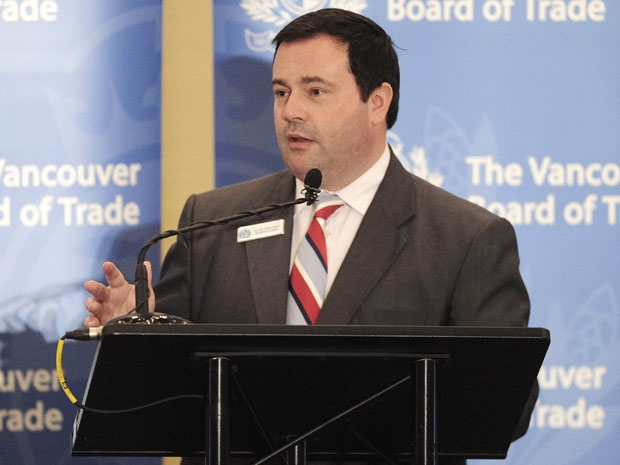
Memo to Canada: Pay your insurance premiums
Most Canadians are pretty prudent. They pay the insurance premiums on their homes and their cars. If they have dependents, they probably buy life insurance. It is a logical risk mitigation strategy. However, the country that is Canada has consistently failed to purchase high-quality insurance on the whole enterprise that is Canada, in a host of domains, including health care, defence, intelligence, and a long list of fragile supply chains. There are good reasons why this happens, but there are also ways to change the political culture and the dominant narrative so that it happens considerably less often.
Preparing for rare but serious crises always looks a bit wasteful when those crises are not occurring, and politics in the liberal democracies stresses the short term. Furthermore, any appearance of “waste,” even if that waste is the intentional price paid for robustness, is often spun by political opponents as evidence of incompetence and/or corruption. Indeed, if a given expenditure can’t be shown to have been beneficial in the ordinary course of events within the current election cycle, or, at worst, two election cycles, it doesn’t contribute very much to political capital. When this essential truth is coupled to the normal human inclination to let the urgent displace the important in the competition for our attention, the stage is set for a range of tragedies.
The Covid pandemic has certainly reminded us of weaknesses in many systems. First of all, we had very little surge capacity in our health care system. That has been the case for a long time. During 2001-2002 I chaired a study for the Department of National Defence on asymmetric threat and wrote a fair bit of the final report. One issue we examined in that study was the absence of sufficient surge capacity in health care. Back then, I had joked that the City of Toronto had enough surge capacity to handle a serious double bus crash, but not a great deal more. Today, Canada has far fewer hospital active treatment beds per capita than most developed countries and ranks at the bottom of the OECD countries in this regard. Furthermore, and probably at least as problematic, we have no real system of paid “reserve” health care staff who can be used to augment regular staff on short notice. To be fair, the decline over the years in active treatment beds has been partly due to the advances in medicine. Many procedures that formerly required hospital stays are now so improved that they can be carried out on an outpatient basis. But every improvement in techniques resulted in a decline of capacity, as we bumped our way along the lowest edge of what was adequate in normal times. Hence the chronic long waiting times that Canadians normally experience for a variety of surgeries and treatments.
This absence of surge capacity in health care made the management of the Covid pandemic much harder. The initial lockdowns and constraints were, of course, desperately needed to prevent unnecessary illness and death in the waiting period before we had excellent vaccines and would have been imperative even if greater surge capacity had been available. But the reason why there was a dire need for significant restrictive measures in the year since the spring of 2021, during those waves of the pandemic that occurred after the widespread availability of the vaccines, was primarily to spread out the expected hospitalizations over a longer period, in order to reduce the risk of overwhelming a health care system with no surge capacity to speak of. It will eventually be interesting (and sobering) to see studies on how many Canadians died during the current pandemic because of delays that the pandemic caused in treatment for conditions unrelated to Covid.
The health care system is not unique in its lack of robustness. During the last thirty years, the idea of doing everything more economically by reducing costs with “just in time” delivery of goods and services has infected the whole society. That trick, which seems to have originated with the Japanese auto industry, became the Holy Grail for cost reduction in a whole range of endeavours. Of course, everyone loves a bargain. But, while tailoring every process for minimum inventory and minimum unused capacity may make it very price competitive, it also makes it vulnerable to shocks. Shocks like being far back in the queue for supplies that come from abroad, especially when they come from places that are not our allies. No, that’s not an argument for bringing all supply chains onshore at a huge cost. But it is a legitimate argument for a judicious mixture of onshoring, “friendshoring,” and diversifying by having multiple suppliers, even if it costs somewhat more.
It is a basic fact that if you want robustness and resilience, it costs more. Most societies understand, for example, that armed forces are not especially economical. Their costs, particularly in capital requirements, often provoke astonishment and ridicule. But any large organization that is supposed to continue to function well in conditions of chaos and complexity cannot be economical in the usual sense of that term. It can be effective and may even be seen as efficient, but never “economical.”
Canada has a long history of neglecting its armed forces until the very moment they are sorely needed. That was the defining narrative of Canada’s military preparedness in the early days of both World Wars. And, regrettably, it is somewhat the situation we find ourselves in today, as we watch the Russian invasion of Ukraine grind inexorably towards an ugly stalemate steeped in human suffering, with uncertainty about what actions we may eventually need to take to defend our own sovereignty or uphold our international obligations.
There are others far better equipped than I am to set out in detail the capabilities that the Canadian Armed Forces need but currently lack and to elaborate upon the increased resources needed to carry out such a reinvigoration and modernization. Two recent articles by two long-time friends are a good starting point: the first is a CGAI piece on March 3 by Hugh Segal, and the second is an article in this magazine on March 11 by LGen (ret’d) Michel Maisonneuve.
But there is plenty of evidence that our government does not take the need for robust armed forces very seriously. We only pay lip service to our agreed-upon NATO commitment to spend at least 2% of our GDP on defence; we are still below 1.4%.
Successive governments seem to have assumed that there is little political milage in doing a good job of paying that particular insurance premium and have telegraphed that opinion in many other ways as well. For example, one only has to look at the arthritic, never-ending procurement process for pretty much anything military, be it ships, planes, vehicles, or even the pistols carried by into combat by our army officers. The first thing that one notices is that the whole procurement system is intensely focussed on the spin-off economic benefits to Canada. The process is predicated upon the elaborate falsehood that the regional economic benefits that the Crown will insist upon do not increase the cost of the project or product. Since these benefits are routinely negotiated after a given bid is tentatively selected, all bids are padded heavily in the first instance, as the suppliers who are bidding know they will be beaten up severely after being selected by being subsequently dragooned into doing much of the manufacturing of the product in some slightly economically disadvantaged part of Canada, regardless of the extent to which that change will increase their costs. To be crude about it, procurement of equipment for the Canadian Armed Forces routinely functions as an elaborate subsidy program for political campaigning by pouring government dollars into marginal ridings, with the possible side effect of getting some equipment for the armed forces eventually.
A dramatically more forthright approach would be to give the department responsible for regional economic development its own budget. Then, after a bid for equipment has been accepted on its merits for both price and capability, the department responsible for regional economic development can use a portion of its budget as an additional inducement to persuade the winning bidder to locate some or all of its manufacturing in Canada (and perhaps in specific parts of Canada) in exchange for the extra payment. Such a division of negotiating responsibility and costing would have positive effects. There would be transparency about the true price of the economic offsets, and we would no longer fear that extraneous factors other than suitability, sustainability, and affordability influenced the selection.
Of course, security of supply is enhanced if the product is made in Canada, but concern about the fragility of supply chains is an issue that relates primarily to the mostly rapidly expended supplies that need to be replenished often, not to capital equipment that is replaced only every couple of generations. Once we’ve got the capital equipment, we’ve got it for its entire service life, especially if we purchase the related intellectual property at the time of initial acquisition, giving us complete control of all maintenance and upgrades.
The other great nonsense in defence procurement is our insistence upon long, drawn-out competitive bidding processes for everything, under the assumption that competitive bidding is the only way to guarantee probity. Competitive bidding in Canada works very well for routine goods. But it only works well for specialized military equipment in huge markets like the USA, where there are enormously robust industrial players. In Canada, most of our local defence industry players that we hope will bid on complex defence equipment contracts are fairly weak, so making them fight one another to get contracts is a bit like making two drunks fight, meaning that both are likely to fall down. When faced with real emergencies, we ought not to do that. As we learned during the Second World War, it makes more sense to force the Canadian industrial players to cooperate with one another rather than compete. In emergencies, of course, it is also entirely legitimate to sole source for rapid effect, as we did for the C-17’s that we desperately needed during our involvement in Afghanistan, and which have turned out to be enormously useful.
But however desirable it might be to have adequate surge capacity in health care, or adequate armed forces, or robust supply chains, or better cyber safety, how do we get there when the political process that we are all inured to rewards cheapness and fragility, and denigrates any politician who actually seeks robustness as an irresponsible and wasteful steward of the public purse? How do we change the narrative in a way that encourages the country to pay its insurance premiums as readily as its individual citizens do?
In a way, we may be lucky in our misfortune. The Covid pandemic and Russia’s war against Ukraine are sufficiently grave crises that they will not soon be forgotten, and may therefore act as signposts for how we treat certain issues of public policy for a good long while, perhaps a generation or even a bit longer. The “Oh, that will never happen” factor has been removed, and that memory will persist for a considerable time. The narrative has already begun to change.
So, what discourse will keep up the momentum for reform so that it can be carried out well before the next crisis? We must remember that the needed robustness and resilience has a great similarity to a parachute: when you actually need one, it’s rather too late to go out and order it. And when you need it, you really need it.
It might be a useful addition to the revised narrative to point out that the extra dollars spent on robustness may yield some modest cost reductions elsewhere, even if the rare but grave emergencies for which the robustness was put in place never occur.
There are examples in health care of savings to society as a side effect of increasing hospital capacities, staffing levels, and throughput. The reduction or near elimination of waiting times for a variety of surgeries and treatments would have the effect of returning large numbers of people to the workforce sooner, earning wages, and paying taxes. And we know that shortened waiting times prevent many conditions from becoming more severe and requiring even more expensive and extensive treatment later.
Interestingly, some of the surge capacity needed for robustness in health care already exists, but can’t be used, due to the bizarre mismatch between how most physicians are compensated and how hospitals are funded. In Canada, most physicians, except for full-time clinical faculty in the 17 medical schools, are compensated on a fee-for-service basis. The more they work, the more they can earn. But hospitals are on fixed budgets so that when they experience financial constraints, their only method of cutting expenses is to do less, which often means fewer hours of use of operating rooms or expensive diagnostic equipment because this reduces their expenses for nursing and other staff and for some supplies. This often results in some of the most expensive capital facilities in the world getting used as little as five shifts a week (40 hours), out of an upper limit of 21 shifts.
I know many hospital-based clinicians who complain bitterly that they get only two or three clinics a week, when they would rather do considerably more. This mismatch in the two funding methodologies means that, in many settings, we do not have a lack of physicians, just a lack of physicians’ services. And those fancy machines that can’t be used for patients the other 128 hours of the week? Well, in some jurisdictions they do get used, but for extra income from veterinary service providers. In some places you can get an MRI or CT scan for your dog or cat right away, but your mother may have to wait weeks.
Increased robustness of the Canadian Armed Forces can also have a few side benefits that can justify a narrative about how the extra costs for robustness will have some modest return, even when threats to Canada are minimal. Improved search and rescue capability is one desirable effect, as is increased utility of the Canadian Armed Forces during internal natural disasters, which one must admit are not all that rare. And while bringing the CAF up to a reasonable strength for a country of our size implies a non-trivial increase in the numbers of those who serve, all those new members will be employed, pay taxes, and will be learning skills, many of which are technical, analytical or management skills transferable to their civilian lives and jobs when they leave the armed forces.
So, the only way to change the political climate that currently prevents us from having robustness and resilience in key areas is to consciously decide to do so.
A collective resolve not to attack political opponents for capacity-building in the key areas would go a long way. There will never be a dearth of things to squabble over in the political arena, so a multiparty understanding about some shared objectives in these critical areas would not materially hamper lively political competition. And such a resolve might actually restore some respectability to political discourse in this country, which at this point is in somewhat short supply.
After all, the first duty of government is the safety and security of its citizens. Fail in this, and no other role of government has meaning. We should pay the insurance premiums.









